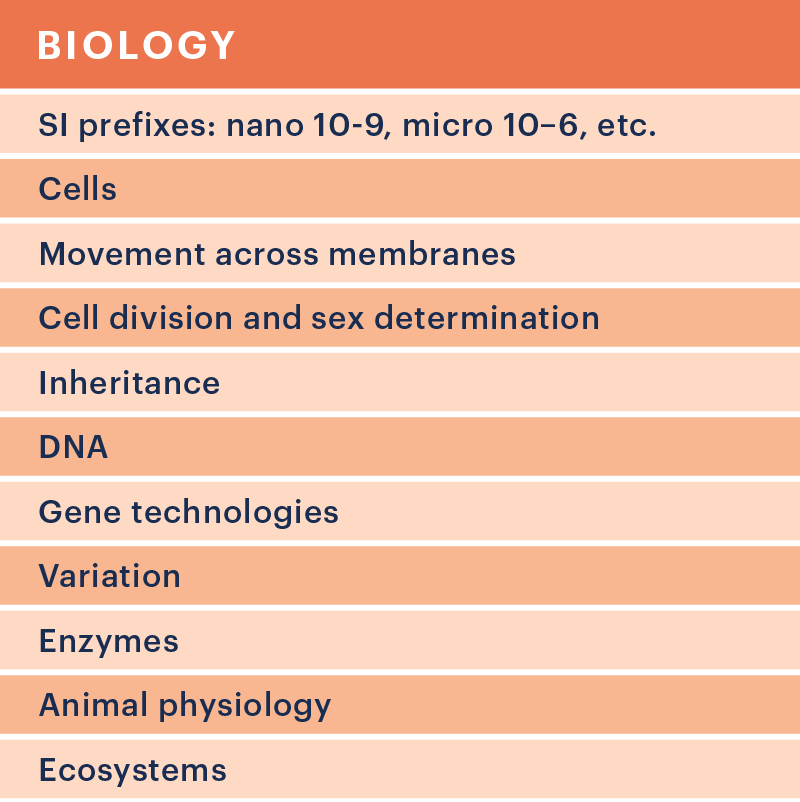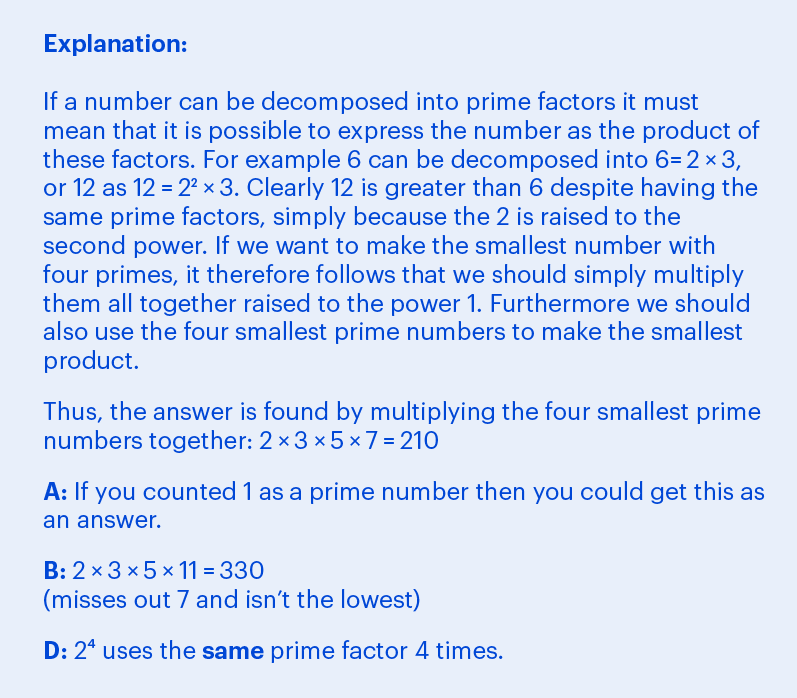BMAT Section 2: Practice Questions and 13 Expert Tips
BMAT will be withdrawn from 2024. Keep an eye on our TikTok channel and live updates article to find out what's happening with BMAT universities after next year.
Looking to beat the BMAT? Today, you’ll learn how to score high in BMAT Section 2, also known as Scientific Knowledge and Applications.
Read our BMAT tips article for an essential overview of the whole exam, and try these BMAT practice questions to get a flavour of what you’re up against.
NOTE: BMAT will take place on 18 October 2023 and will be a pen-and-paper test.
BMAT Section 2 breakdown with practice questions

This section tests your scientific knowledge and whether you can apply it. Having a strong scientific foundation is important to being a healthcare professional. From day one on the job, you’ll have a lot to learn, so getting the basics sorted early is essential.
Note that this forms 1/3 of the BMAT, so brush up on the BMAT specification too.
Section 2 tests you at GCSE level on the following topics:
Biology



Chemistry



Physics



Maths




While one exam board includes certain content at GCSE, others will include it at AS level. For this reason, revise each topic up to AS level to ensure you cover everything.
For specific details, read the official BMAT test specification.
Top tips for BMAT Section 2

1. Learn how BMAT Section 2 is marked
You’ll get a raw score out of 27, which will then be scaled into a score out of 9. Typically a good score is above 6 and exceptional students will get above 7.
To find out more, check out our article: What is a good BMAT score?
2. Start early
Start your preparation at least one month before your exam – preferably two to three months before. This way, you won’t have to cram. Cramming can make you feel stressed and anxious and the quality of revision won’t be as high.
Starting early means that your revision sessions don’t need to be intense and you can cover more overall in less time per day. You’ll also be able to balance your other work and academic commitments.
3. Learn the content
It’s essential that you’re confident in the content for BMAT Section 2.
Once you’ve registered to take the exam, you’ll have access to the official Section 2 assumed knowledge guide, which is an ebook. This covers all the topics in the BMAT specification.
You can also find concise yet thorough notes in our BMAT Online Course. With over 250 easy-to-understand tutorials, you get a solid, curriculum-led revision course. The mobile-friendly interface means that you can do your revision on the go. You can have 24/7 access all the way until test day from just £30.
It’s important that you focus on filling in the gaps in your knowledge first. If you don’t fully grasp waves in physics, for example, even after a few tries, then take the time to really comprehend this before you start revising the next topic.
4. Practise under timed conditions
Section 2 is probably the most time pressured section of the BMAT. To overcome this, practise working under timed conditions as much as possible.
When you start off, it’s okay not to time yourself. Focus on getting familiar with the style of questions. Once you're comfortable, the majority of your preparation should be done under timed conditions.
5. Timestamps
Always looking up to check your watch or the clock is going to waste your time. Instead, use time stamps.
Write out your milestones before the test and check from time to time to see if you’re still on track.
If you've only answered seven questions after 20 minutes, you’ll know you need to hurry up a little bit. You won't need to stare at your watch.
6. Keep moving
The BMAT is supposed to be hard.
Section 2 will have some extremely difficult questions, but it’ll also have some fairly easy ones. If you’re struggling to work out the answer to the question, guess and move on.
- You don’t have marks deducted for wrong answers, so never leave a question unanswered.
- You don’t need to get every question right to get a high score in BMAT section 2.
- Use the process of elimination to narrow down your answer options and increase your chance of getting the question right.
7. Mental maths
You won’t have access to a calculator in the BMAT. This means that your mental maths will play a crucial role in your success. The stronger it is, the less working out you’ll have to do on paper and the quicker you’ll be able to answer. If there are big differences between the answer options, use estimation to make it easier.
You could practice your mental maths while doing BMAT questions. Alternatively, you could do mental maths quizzes or puzzles. Being creative in your preparation will help make the process more enjoyable and less stressful.
Learn other ways of reducing exam stress.
8. Practise doing your working out on the question paper
You won’t get any extra paper for this – it's all done on the question sheet – so make your working out concise.
From the start, practise with only one piece of paper and use shorthand to avoid writing full words. For example, instead of writing 'red apples', write 'RA'.
9. Prioritise subjects
Most students find biology to be the easiest part of Section 2. Your time is probably better spent improving at physics, chemistry and maths, but work out what your weaknesses are to help you prioritise.
If you've already learned a topic for the UCAT, for example, you won't need to prioritise it. Learn about the differences between the UCAT and BMAT as part of this prioritisation.
10. Learn formulae
You’re not given any formula in the BMAT unless it’s one that you’re not expected to know. This makes it vital that you learn all the formulae relevant to Section 2.
11. Focus on topics that come up most often
Some topics come up time and time again in the BMAT. Focus on these topics and make sure you're rock solid in your understanding. Being confident in these topics will put you in a good position to answer the majority of questions.
Biology
- Genetic diagrams
- Mutations and cloning
- Mitosis and meiosis
- Genetic engineering
- Respiratory system
- Circulatory system
- Hormones
- Homeostasis
- Nerves
- Nitrogen cycle
Chemistry
- Ionic bonding
- Covalent bonding
- Reactivity series
- Equilibrium
- Calculations
- Balancing equations
- Half equations
- Organic chemistry
Physics
- Electricity
- Mechanics
- Nuclear Physics
- Waves
Maths
The maths questions in Section 2 don’t really have a specific pattern. You should prepare for all sections with an equal amount of focus.
12. Start small
Do just Section 1 of a past paper in one sitting. The next time do BMAT Sections 1 and 2.
Finally, add in Section 3 and do all three sections in one sitting.
13. Check your work
There often isn’t time to check your work, so you’ll have to push your speed up to get this valuable time.
During your preparation, try to complete Section 2 in 25 minutes rather than 30 minutes. This will give you around 55 seconds per question.
If you can do it during preparation, it’ll be possible during your actual exam. This will give you an extra five minutes to check your answers and attempt any questions you had to skip.
Here are time stamps to help you keep track if you’re using this strategy.
Summary
BMAT Section 2 is made up of questions covering the three sciences and maths.
You probably already know which area you find most challenging, so factor that into your revision time and make sure you have the fundamentals we mentioned covered for each section.
Good luck!
Access example video responses to interview questions from real students
Succeed in your medical school interview. Start today for only £25
Membership will expire on 31 March 2024 23:59 UK time
Boost your BMAT score with 2,000+ practice questions
Write your personal statement. Try Medify Today
2 in 3 students prepared for UCAT with Medify. Try Medify Now
Boost your UCAT score with 24 mocks and 40+ mini-mocks
2 in 3 students prepared for UCAT with Medify. Try Medify Now
Boost your UCAT score with 24 mocks and 40+ mini-mocks
Boost your BMAT score with 2,000+ practice questions
Write your personal statement. Try Medify Today
2 in 3 students prepared for UCAT with Medify. Try Medify Now
Boost your UCAT score with 24 mocks and 40+ mini-mocks
2 in 3 students prepared for UCAT with Medify. Try Medify Now
Boost your UCAT score with 24 mocks and 40+ mini-mocks
2 in 3 students prepared for UCAT with Medify. Try Medify Now
Boost your UCAT score with 24 mocks and 40+ mini-mocks
